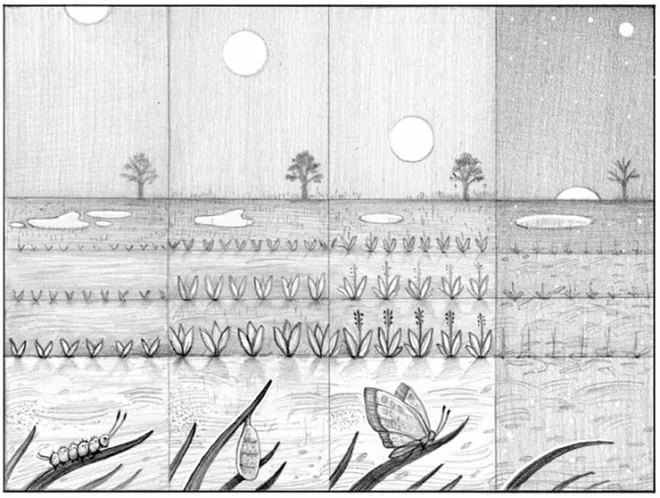I volunteer with children after school, cultivating the love of knitting. One afternoon I asked a 12-year-old, “What time is it?” The young person looked at a watch and said, “It is 3:57.”
My head snapped up as I realized I had heard this exact way of expressing time from children many times. I asked the child, “Do you mean it is almost 4 o’clock?”
“No,” came the reply. “It is 3:57, not 4:00. And now it is 3:59.”
The young no longer say that it is almost 4:00 or—heaven for-bid—quarter of four. To them, time is set at a precise digital point.
Some scientists think that if there is no language for an idea, it doesn’t exist. Are we seeing a revolution in the way people think and respond to time? Are we changing from the flow of the seasons to the minutiae of microseconds?
Once the season we call Fall or Autumn was called Harvest. People lived close to the land and used the language of the land. The workday ran from sunrise to sunset. Hours were seldom considered, let alone minutes. Interestingly, although technology may have lessened our workloads, we often feel like we have less time than ever before! Once we filled our days. Now we fill our seconds. If you find yourself rushing to get to a meeting by 1:43, and then on to an appointment at 2:26, then—alas—to another meeting by 4:15, stop and get thee to the garden!

Gardens function on light, temperature, and the yearly cycle of seasons. Garden time is circular, not set at a rigid point. It encourages you to breathe and think, “Maybe it is about time to plant,” instead of “I have to plant at 4:37 p.m.”
Annual plants go through their life cycle in one year, while perennials form a support system in the roots, so they can cycle year after year. Annuals thus require a bit more precise planning: “I must get these seeds planted by April,” in contrast with “I must cut back those salvia sometime in late winter.” But both are kinds of seasonal time—and the gardener gets to flow with both.
Gardening is the saving grace for microsecond thinking. Working with plants forces us to think, “It’s about time to sow my summer crops,” instead of “I’ll place these seeds in the ground at precisely 6:47.” We can breathe in the spicy fragrance of flowers in bloom, thankful that we are here in the garden for a while—an unaccounted-for amount of time. We can think in terms like “about,” “almost,” “in a bit,” and “when I get around to it.”
Gardeners can luxuriate in sweet, old-fashioned seasonal flow and, at least while they are among their plants, let the pulse and push of fragmented time go. ❖


 Previous
Previous

